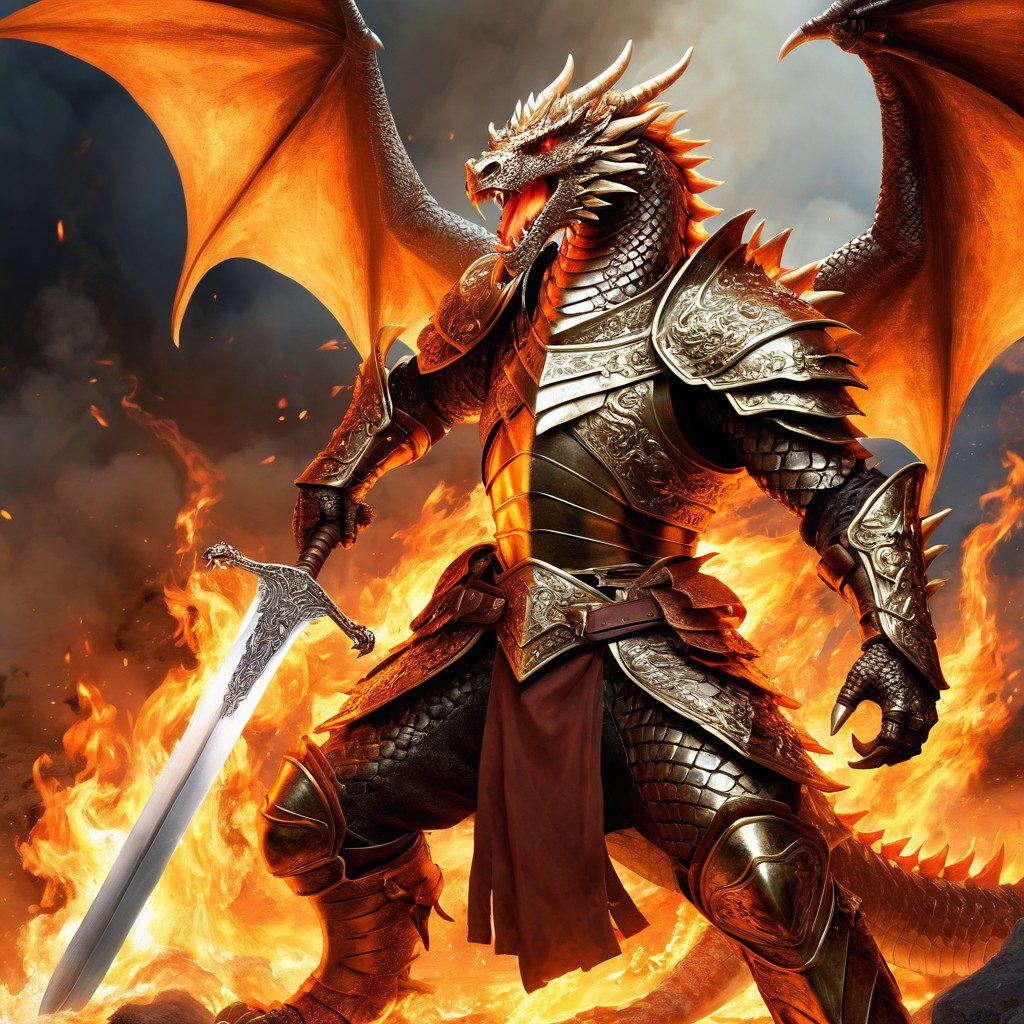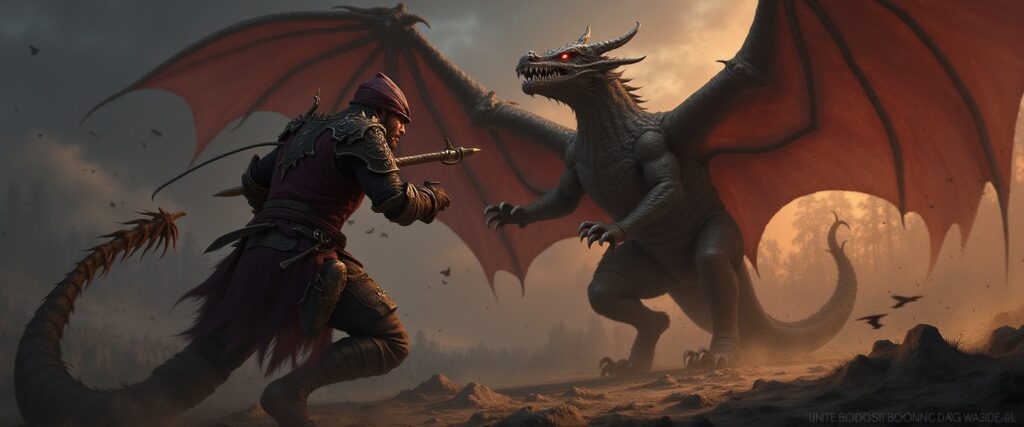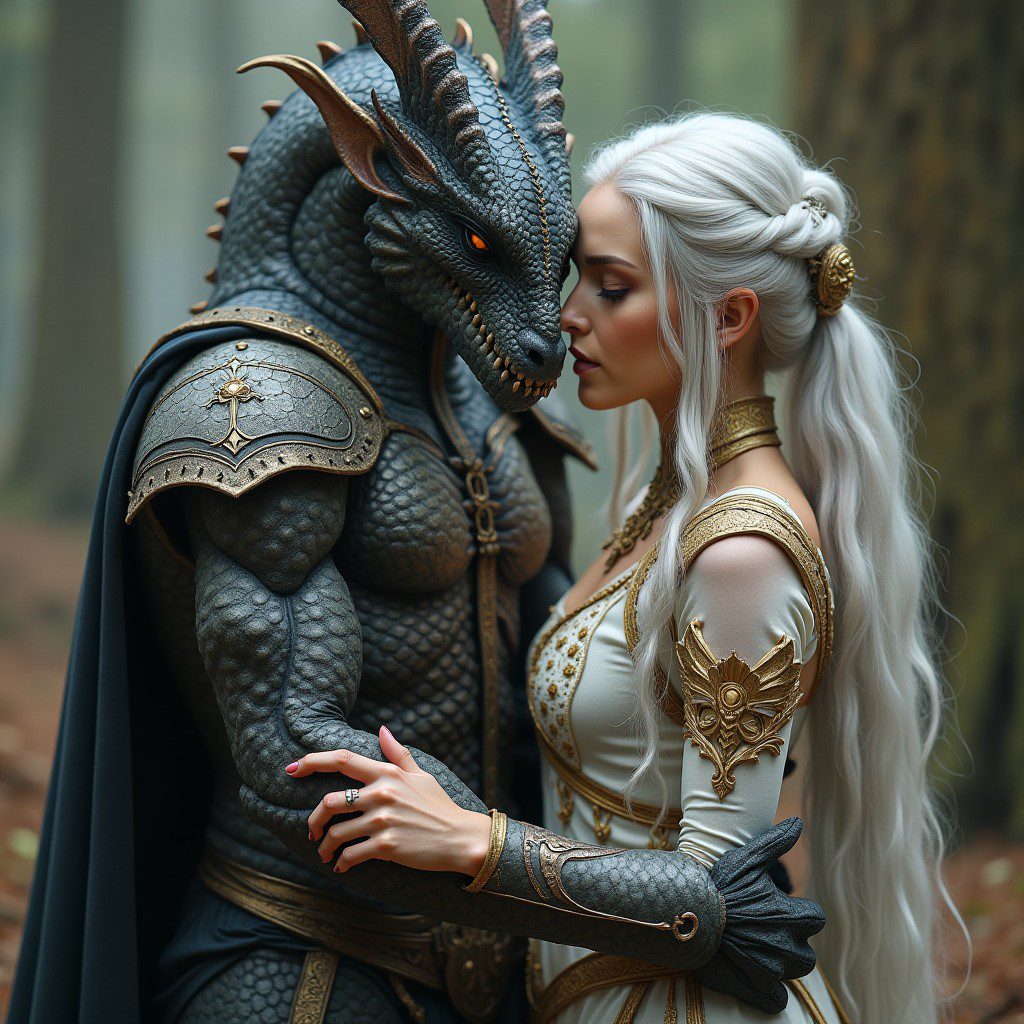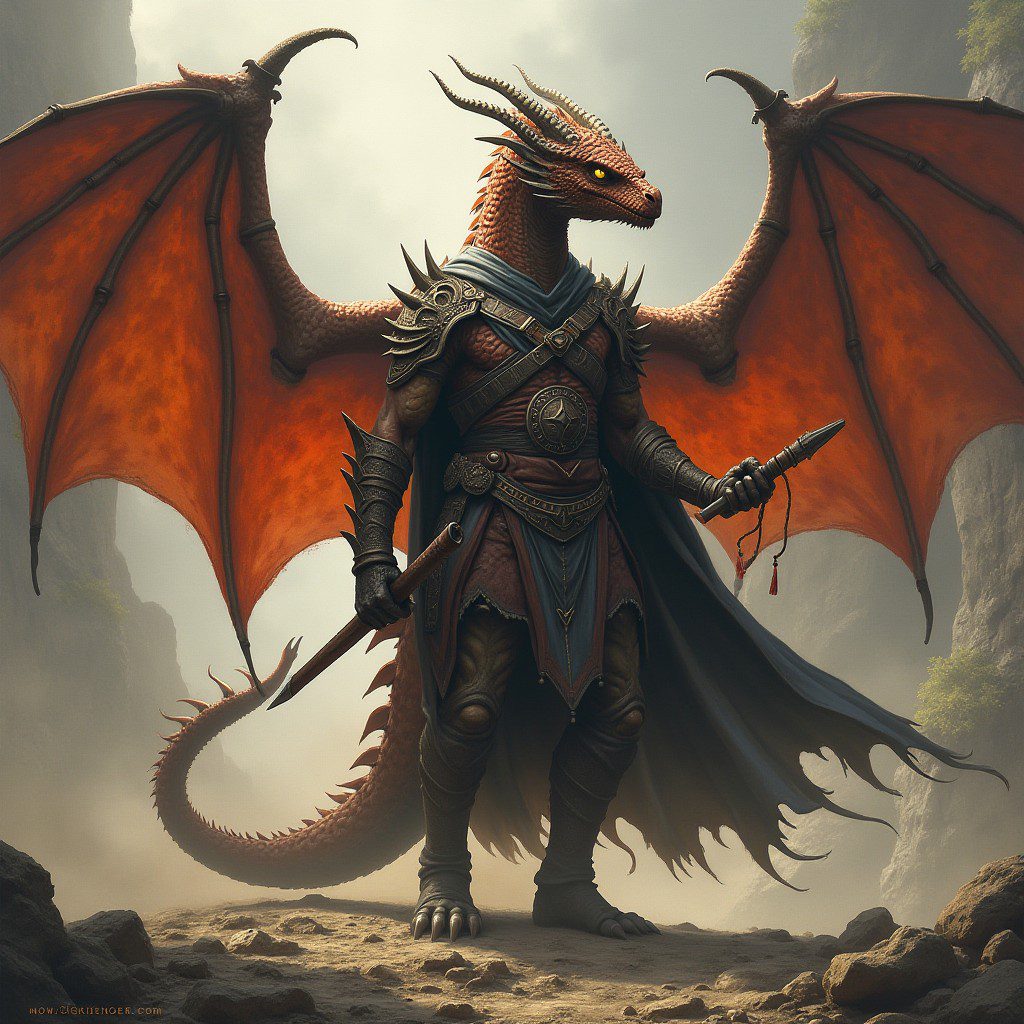Dragonborn: The Draconic Warriors of Fantasy

The Dragonborn are a unique race in modern fantasy, often depicted as humanoid beings with draconic ancestry. While they may vary in appearance and abilities depending on the universe in which they appear, Dragonborn are usually characterized by their dragon-like features, including scales, claws, and the ability to breathe fire or other elemental forces. This draconic heritage is often central to their identity, granting them power, but also placing them at odds with other races or societies in the world of fantasy.
While Dragonborn are most commonly associated with tabletop games like Dungeons & Dragons (D&D), they have appeared in a variety of modern media, including video games, novels, and films. Their powerful, majestic nature, combined with their struggle to balance their draconic heritage with the more human aspects of their existence, makes them compelling figures in the fantasy genre.
Origins of Dragonborn in Fantasy

The concept of Dragonborn largely originates from modern fantasy, particularly from the Dungeons & Dragons universe, though it draws inspiration from ancient myths about dragons and half-human, half-dragon beings. Dragons have long been a central part of many mythologies, symbolizing power, wisdom, and sometimes destruction. In these traditions, dragons are often depicted as ancient, intelligent beings, sometimes with the ability to shapeshift into human forms.
Dragonborn, as they appear today, are not typically found in ancient mythology but are instead a fusion of draconic traits with the humanoid form, representing a bridge between the primal power of dragons and the more human-like qualities of strength, courage, and independence. This allows Dragonborn characters to occupy a unique space in fantasy, blending the fierce might of dragons with the complexity of humanoid societies.
Dragonborn in Dungeons & Dragons
The most well-known depiction of Dragonborn comes from Dungeons & Dragons (D&D), where they are a playable race introduced in the 3.5 Edition of the game but truly popularized in the 4th Edition and continuing into the 5th Edition. In D&D, Dragonborn are descendants of dragons, either created by powerful dragon gods like Bahamut and Tiamat or descended from ancient dragonkin. They combine the physical prowess and elemental powers of dragons with the sentient, bipedal form of a humanoid.
Physical Appearance


Dragonborn are often described as tall and muscular, standing between six and seven feet tall, with dragon-like features such as:
- Scales that range in color depending on their draconic ancestry (red, blue, green, black, or white, among others).
- Clawed hands and feet, though they often retain humanoid proportions.
- Long, reptilian tails (in some depictions).
- A dragon-like snout and sharp teeth.
While Dragonborn do not possess wings or the ability to fly like full-blooded dragons, they retain many of their draconic ancestors’ powers, including elemental breath weapons and resistance to certain elements.
Draconic Ancestry
One of the defining features of Dragonborn in D&D is their Draconic Ancestry, which grants them elemental powers based on their dragon forebears. Each Dragonborn is born with an affinity for a particular type of dragon, which determines the color of their scales and their breath weapon (the ability to exhale destructive energy). Common types of Dragonborn and their corresponding breath weapons include:
- Red Dragonborn: Fire breath and resistance to fire.
- Blue Dragonborn: Lightning breath and resistance to lightning.
- Green Dragonborn: Poison breath and resistance to poison.
- Black Dragonborn: Acid breath and resistance to acid.
- White Dragonborn: Cold breath and resistance to cold.
This ancestry often plays a major role in Dragonborn culture, as it ties them to the powerful dragon deities or ancient dragon clans. Dragonborn characters may struggle with the expectations of their ancestry or seek to embody the virtues of their draconic lineage.
Culture and Society
In Dungeons & Dragons, Dragonborn culture is usually depicted as being built around honor, strength, and discipline. They often value personal and collective honor above all else, seeking to prove their worth in battle and in life. This code of honor can lead Dragonborn to become powerful warriors, leaders, and strategists.
Dragonborn are often portrayed as having a strong sense of loyalty to their clans and communities. They tend to be proud of their heritage and may exhibit a sense of duty toward the protection or advancement of their people. This pride can sometimes manifest as arrogance, especially in Dragonborn who view themselves as superior to other races due to their draconic lineage.
Alignment and Morality
While individual Dragonborn can align themselves with any moral or ethical code, their connection to their draconic ancestry often influences their behavior. Dragonborn descended from metallic dragons (such as gold, silver, and bronze) are often portrayed as noble and virtuous, aligning themselves with good causes. In contrast, those descended from chromatic dragons (such as red, black, and blue) may have a more chaotic or selfish nature, though this is not always the case.
Dragonborn may follow gods like Bahamut, the Platinum Dragon, who represents justice, honor, and protection, or Tiamat, the multi-headed chromatic dragon goddess who embodies destruction and greed.
Dragonborn in Other Media
While Dungeons & Dragons has had the most significant influence on the depiction of Dragonborn, the concept of dragon-human hybrids or draconic humanoids appears in other forms of media as well, each with its own interpretation of these powerful beings.
1. The Elder Scrolls V: Skyrim
One of the most famous uses of the term Dragonborn comes from The Elder Scrolls V: Skyrim, where the player character, the Dragonborn, is a mortal with the soul of a dragon. In this game, Dragonborn are not draconic humanoids but rather individuals blessed with the power of dragons, allowing them to speak the Thu’um (Dragon Shouts), a powerful language of magic. The Dragonborn is destined to confront Alduin, the world-eating dragon, in a battle that will determine the fate of Tamriel. In this context, the Dragonborn embodies both the strength and destiny of dragons but remains visually human.
2. Dragonborn in Fantasy Literature
Dragonborn-like characters also appear in fantasy literature, often as part-dragon beings who struggle with the balance between their human side and their draconic power. In works like Eragon by Christopher Paolini, while there are no true Dragonborn, the connection between humans and dragons through dragon riders explores similar themes of power, legacy, and the relationship between humanity and dragons.
3. Video Games
In many other fantasy games, Dragonborn or dragon-like humanoid characters exist, often serving as powerful warriors or spellcasters. Games like World of Warcraft, Dragon Age, and Final Fantasy include draconic races or characters with dragon ancestry who wield immense power, often reflecting the same themes of honor, strength, and internal struggle found in D&D.
Strengths and Weaknesses of Dragonborn
Strengths:
- Breath Weapons and Elemental Resistance: One of the defining features of Dragonborn is their ability to breathe destructive elemental energy, such as fire, lightning, or poison, depending on their ancestry. They also have natural resistance to the corresponding element, making them formidable in battle.
- Physical Prowess: Dragonborn are often depicted as strong, durable, and imposing, combining the might of dragons with the mobility of humanoids. This makes them effective warriors and front-line fighters.
- Innate Magic: Dragonborn may also have an innate connection to magic, especially if their ancestry is linked to dragons with magical abilities. This magical affinity can give them access to powerful spells and enchantments.
- Cultural Pride and Honor: Dragonborn are often depicted as having a strong code of honor, loyalty to their clans or communities, and a sense of personal pride. This makes them dependable allies and powerful leaders.
Weaknesses:
- Struggle with Identity: Many Dragonborn grapple with their dual nature, balancing their humanoid qualities with the draconic legacy they carry. This internal struggle can lead to feelings of isolation or conflict, particularly if they feel caught between two worlds.
- Arrogance and Pride: Dragonborn’s connection to dragons can make them prideful, sometimes to the point of arrogance. This can create tensions with other races or characters, particularly if they view others as inferior.
- Limited Abilities Compared to Full Dragons: While powerful, Dragonborn are not as mighty as full-blooded dragons. They lack abilities like flight and the immense magical powers that true dragons possess, which can put them at a disadvantage when facing larger foes.
The Legacy of Dragonborn: Powerful Warriors with Draconic Souls
Dragonborn have become an iconic race in modern fantasy, symbolizing the powerful connection between humanity and dragons. Their draconic ancestry gives them strength, honor, and elemental power, but also places them in a constant struggle between their human side and their primal, dragon-like instincts.
Whether as noble protectors, fearsome warriors, or conflicted individuals grappling with their identity, Dragonborn continue to captivate audiences in games, literature, and other media. Their blend of physical might, magic, and moral complexity makes them compelling characters in the vast worlds of fantasy, where they will likely remain a staple for years to come.
